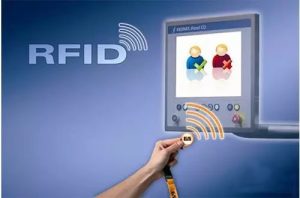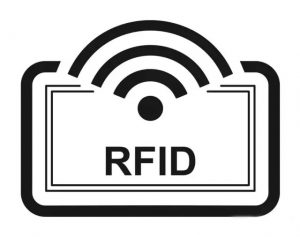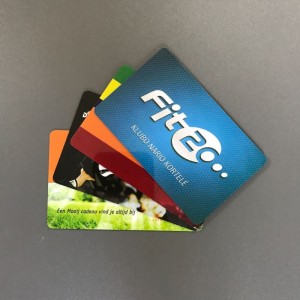Comprehensive analysis of RFID related standards
RFID is a wireless communication technology that uses radio signals to identify specific targets and read and write related data without the need to identify mechanical or optical contact between the system and a particular target.
In many industries, RFID technology is used to attach a tag to a bicycle that is being produced. The manufacturer can track the progress of the car on the production line; attach the tag to the drug package, and the warehouse can track where the drug is located. Labels can also be attached to livestock and pets to facilitate positive identification of livestock and pets (ie, to prevent several animals or pets from using the same identity). The RFID-enabled identification card allows employees to access the locked building section, and the RFID transponder on the car can also be used to collect the cost of the road and parking lot.
Some RFID tags are attached to clothing, personal belongings, and even implanted in the human body. Because this technology may read personal information without your permission, this technology may also inflict personal privacy concerns.
Some RFID tags are attached to clothing, personal belongings, and even implanted in the human body. Because this technology may read personal information without your permission, this technology may also inflict personal privacy concerns.
RFID related standards
International Standard: Developed by ISO (International Organization for Standardization) IEC (International Electrotechnical Commission). The main function of ISO is to provide a mechanism for people to agree on the development of international standards.
National standards: formulated by the Ministry of Industry and Information Technology and the National Standardization Management Committee.
Industry standards: Developed by international and national industry organizations, such as the EPC standard for object recognition by the International Article Code Association (EAN) and the United States Uniform Code Council (UCC).
In addition, there are specifications for design ethics, ethics, health, data security, privacy, and more.
Standard role
- Ensuring the progress of collaborative work, standardizing the realization of the economy, and the safety of work implementation.
- The main purpose is to solve the problems of coding, communication, air interface and data sharing by formulating, publishing and implementing standards to maximize the application of RFID technology and related systems.
RFID Interface Protocol
Air interface
Air Interface Communication Protocol Specification The interaction between readers and electronic tags is designed to enable interoperability between devices from different manufacturers. ISO/IEC develops air interface protocols for five frequency bands. This idea fully reflects the relative unity of standards. One standard is a common requirement for a wide range of application systems, but not all application systems. A set of standards can satisfy more. A wide range of application needs.
ISO/IEC 18000-1 Information Technology – Radio Frequency Identification – Reference Structure and Standardized Parameter Definition Based on Item Management. It regulates the communication parameter list of readers and tags and the basic rules of intellectual property that are commonly observed in the air interface communication protocol. Thus, the standard corresponding to each frequency band does not need to be repeated for the same content.
ISO/IEC 18000-2 Information Technology – Radio Frequency Identification Based on Item Management – Applicable to IF 125~134KHz, specifies the physical interface for communication between tags and readers, readers should have Type A (FDX) and Type B (HDX) tag communication capabilities; provisions for protocols and instructions plus anti-collision methods for multi-tag communication.
ISO/IEC 18000-3 Information Technology – Radio Frequency Identification Based on Single Product Management – Applicable to the high frequency band 13.56 MHz, specifying the physical interface, protocol and command between the reader and the tag plus the anti-collision method. The anti-collision protocol can be divided into two modes, and the mode 1 is further divided into a basic type and two extended types of protocols (no time slot non-terminating multi-transponder protocol and time slot termination adaptive polling multi-transponder reading protocol) . Mode 2 uses a time-frequency multiplexed FTDMA protocol with a total of 8 channels, which is suitable for the case of a large number of tags.
ISO/IEC 18000-4 Information Technology – Radio Frequency Identification Based on Single Item Management – Applicable to the microwave section 2.45 GHz, which specifies the physical interface, protocol and command between the reader and the tag plus the anti-collision method. The standard includes two modes. Mode 1 is that the passive tag works by the reader first; mode 2 is the active tag, and the working mode is the tag first.
ISO/IEC 18000-6 Information Technology – Radio Frequency Identification Based on Single Product Management – Applicable to the ultra-high frequency band 860~960MHz, which specifies the physical interface, protocol and command between the reader and the tag plus the anti-collision method. It contains interface protocols for TypeA, TypeB and TypeC passive tags, and the communication distance can be up to 10m. TypeC was drafted by EPCglobal and approved in July 2006. It has greatly improved in recognition speed, read/write speed, data capacity, collision avoidance, information security, frequency band adaptability, and anti-interference. Draft V4.0 was submitted in 2006 to extend the features of auxiliary power and sensor electronic tags, including tag data storage and interactive commands. Active tags with batteries provide a wide range of readability and greater communication reliability, but they are larger and more expensive.
ISO/IEC 18000-7 is suitable for the ultra-high frequency band 433.92 MHz and is an active electronic tag. Specifies the physical interface, protocol, and command between the reader and the tag plus the anti-collision method. The active tag has a large reading range and is suitable for tracking large fixed assets.
Data standard
The air interface communication protocol regulates the information exchange between the reader and the electronic tag, and the purpose is to interconnect the devices between different manufacturers. ISO/IEC develops air interface protocols for five frequency bands. This idea fully reflects the relative unity of standards. One standard is a common requirement for a wide range of application systems, but not all application systems. A set of standards can satisfy more. A wide range of application needs.
ISO/IEC 18000-1 Information Technology – Radio Frequency Identification – Reference Structure and Standardized Parameter Definition Based on Item Management. It regulates the communication parameter list of readers and tags and the basic rules of intellectual property that are commonly observed in the air interface communication protocol. Thus, the standard corresponding to each frequency band does not need to be repeated for the same content.
ISO/IEC 18000-2 Information Technology – Radio Frequency Identification Based on Item Management – Applicable to IF 125~134KHz, specifies the physical interface for communication between tags and readers, readers should have Type A (FDX) and Type B (HDX) tag communication capabilities; provisions for protocols and instructions plus anti-collision methods for multi-tag communication.
ISO/IEC 18000-3 Information Technology – Radio Frequency Identification Based on Single Product Management – Applicable to the high frequency band 13.56 MHz, specifying the physical interface, protocol and command between the reader and the tag plus the anti-collision method. The anti-collision protocol can be divided into two modes, and the mode 1 is further divided into a basic type and two extended types of protocols (no time slot non-terminating multi-transponder protocol and time slot termination adaptive polling multi-transponder reading protocol) . Mode 2 uses a time-frequency multiplexed FTDMA protocol with a total of 8 channels, which is suitable for the case of a large number of tags.
ISO/IEC 18000-4 Information Technology – Radio Frequency Identification Based on Single Item Management – Applicable to the microwave section 2.45 GHz, which specifies the physical interface, protocol and command between the reader and the tag plus the anti-collision method. The standard includes two modes. Mode 1 is that the passive tag works by the reader first; mode 2 is the active tag, and the working mode is the tag first.
ISO/IEC 18000-6 Information Technology – Radio Frequency Identification Based on Single Product Management – Applicable to the ultra-high frequency band 860~960MHz, which specifies the physical interface, protocol and command between the reader and the tag plus the anti-collision method. It contains interface protocols for TypeA, TypeB and TypeC passive tags, and the communication distance can be up to 10m. TypeC was drafted by EPCglobal and approved in July 2006. It has greatly improved in recognition speed, read/write speed, data capacity, collision avoidance, information security, frequency band adaptability, and anti-interference. Draft V4.0 was submitted in 2006 to extend the features of auxiliary power and sensor electronic tags, including tag data storage and interactive commands. Active tags with batteries provide a wide range of readability and greater communication reliability, but they are larger and more expensive.
ISO/IEC 18000-7 is suitable for the ultra-high frequency band 433.92 MHz and is an active electronic tag. Specifies the physical interface, protocol, and command between the reader and the tag plus the anti-collision method. The active tag has a large reading range and is suitable for tracking large fixed assets.
ISO/IEC 24730-3 applies to the 433MH RTLS air interface protocol.
Technical standard
1 container
The ISO TC 104 Technical Committee is responsible for the development of container standards and is the highest authority for container manufacturing and operation. The standards related to RFID are developed by the Fourth Subcommittee (SC4). Includes the following criteria:
1) ISO 6346 container-code, ID and identification symbols, developed in 1995
This standard provides a container identification system. Container identification systems are used for a wide range of purposes, such as in documents, controls, and communications (including automated data processing), as the container itself displays. The mandatory identification in the container identification plus optional features in the Automatic Equipment Identification (EII) and EDI (Electronic Data Interchange) applications. The standard specifies the coding system for data such as container size, type, etc. plus the corresponding marking method, physical indication of operational markings and container markings.
2) ISO 10374 container automatic identification standard, formulated in 1991, revised in 1995
The standard is based on a microwave transponder’s automatic container identification system, which looks at the container as a fixed asset. The transponder is an active device with an operating frequency of 850MHz~950Mhz and 2.4GHz~2.5GHz. As long as the transponder is in this field, it is activated and responds with backscatter modulation using a deformed FSK subcarrier. The signal is modulated between two subcarrier frequencies of 40 kHz and 20 kHz. Because it was developed in 1991, the term RFID has not been used. In fact, active transponders are today’s active RFID tags. This standard is used in conjunction with ISO 6346 for the identification of containers, ISO 6346 specifies optical identification, and ISO 10374 uses microwaves to characterize optically recognized information.
3) ISO 18185, draft official standard for container electronics (land, sea, air)
The standard is used by customs to monitor container handling [9] and consists of seven parts: air interface communication protocol, application requirements, environmental characteristics, data protection, sensors, information exchange message sets, physical layer characteristics requirements.
The air interface protocols covered by the above two standards do not reference the ISO/IEC 18000 series air interface protocols, mainly because they were developed earlier than the ISO/IEC 18000 series air interface protocol.
Logistics management
In order to enable RFID to play an important role in the entire logistics supply chain, the ISO TC 122 Packaging Technical Committee and the ISO TC 104 Freight Container Technical Committee have established a joint working group JWG to develop a series of standards for the logistics supply chain. The working group formulates six application standards according to application requirements, freight containers, loading units, transportation units, product packaging, and single-product five-level logistics units.
1) ISO 17358 application requirements
This is the application requirements standard for supply chain RFID, hosted by the TC 122 Technical Committee, and is in the process of being developed. The standard defines parameters for each level of the supply chain logistics unit, defining environmental identification and data flow.
2) ISO 17363~17367 series of standards
The supply chain RFID logistics unit series standards regulate the RFID applications of freight containers, recyclable transport units, transport units, product packaging, and product labels. The standard content of this series is basically the same, such as the air interface protocol adopts ISO/IEC 18000 series standards. There are differences in the specific regulations, and supplementary provisions are made for different use objects, such as the use of environmental conditions, the size of the label, the position of the label, and the like, and the carrier frequency of the electronic label is different according to the difference of the object. The electronic labels used in freight containers, recyclable transport units and transport units must be reused, product packaging is subject to actual conditions, and product labels are usually one-off. Also consider the integrity of the data, visual identification and so on. Recyclable units require high data capacity, security, and communication distance. This series of standards is in the process of being developed.
What needs to be noted here is the relationship between ISO 10374, ISO 18185 and ISO 17363. They are all for containers, but ISO 10374 is for the management of the container itself, ISO 18185 is for customs to monitor containers, and ISO 17363 is for supply. For the purpose of chain management, readable and writable RFID identification tags and shipping labels are used on freight containers.
Animal management
ISO TC 23/SC 19 is responsible for the development of standards for animal management RFID, including ISO 11784/11785 and ISO 14223.
ISO 11784 coding structure
It specifies the 64-bit encoding structure of the animal radio frequency identification code. The animal radio frequency identification code requires mutual recognition between the reader and the electronic tag. Usually the bitstream containing the data is added to the encoded data needed to ensure that the data is correct. The code structure is 64 bits, of which 27 to 64 bits can be defined by each country.
We are a professional RFID solution provider, we can supply RFID cards,RFID tags,RFID label,RFID inlay,NFC cards and so on.Please vist: https://www.starnfc.com/product-category/rfid-card/
Please feel free to contact us.




